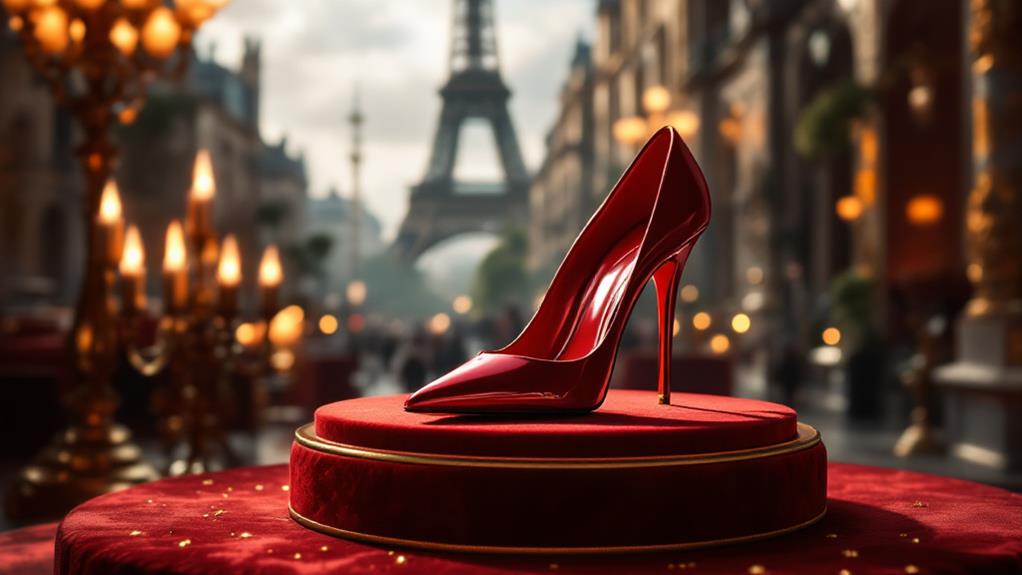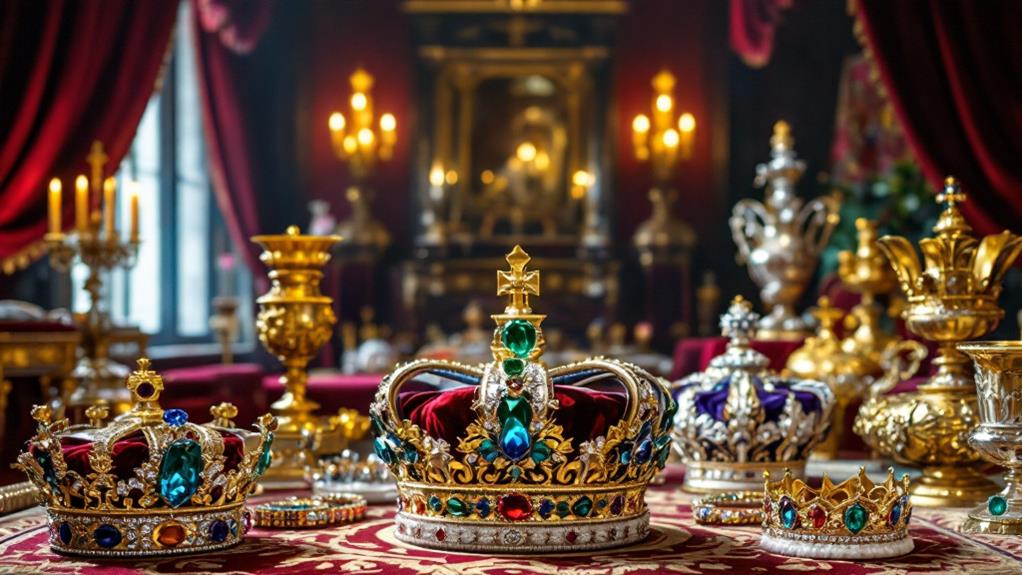The Most Famous Jewels in the World: Stories Behind the Sparkle
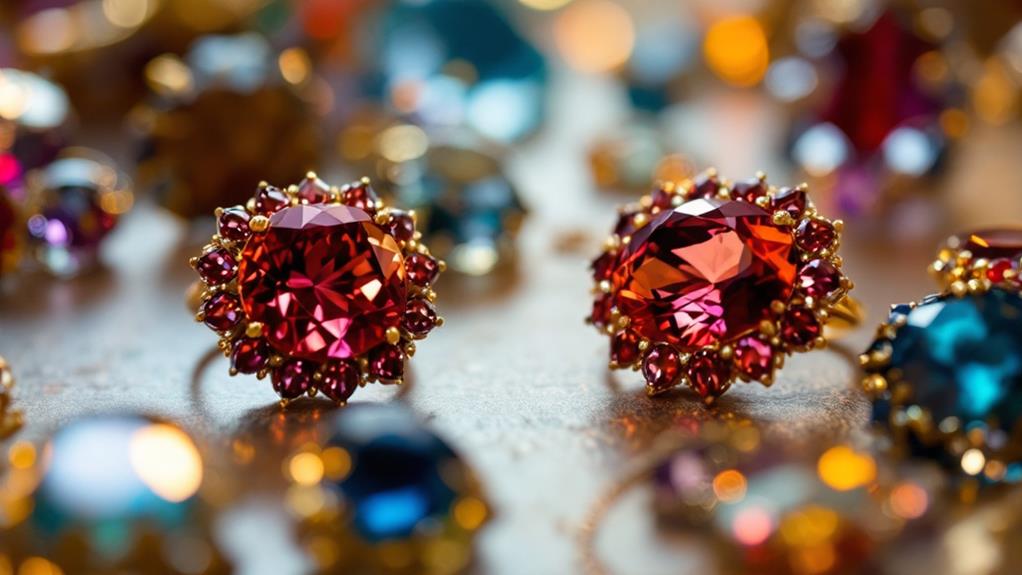
You're about to uncover the fascinating stories behind the world's most famous gems. The Koh-I-Noor Diamond, rich in a history of power struggles, now dazzles as part of the British Crown Jewels. The Hope Diamond, with its deep blue color and reputed curse, draws visitors to the Smithsonian. Then there's the Taylor-Burton Diamond, forever linked to Elizabeth Taylor's romance with Richard Burton. Each gem, from the Black Orlov to La Peregrina Pearl, is steeped in history and mystery. These valuables have shaped royal narratives, inspired tales of curses, and continue to captivate millions—with untold stories waiting to be revealed.
Iconic Diamonds and Their Legends
Diamonds have enchanted humanity for centuries, each with its own tale that sparkles through history. The Koh-I-Noor Diamond, once the world's largest at 793 carats, now shines in the British Crown Jewels. Its odyssey reflects a tumultuous saga of power and ownership, evolving into a 105-carat gem. Another enthralling story is that of the Hope Diamond, renowned for its deep blue color and infamous curse. Weighing 45.52 carats, this diamond's allure draws countless visitors to the Smithsonian Institution, where it's valued at over $200 million.
The Taylor-Burton Diamond tells a passionate love story, initially a 241-carat rough diamond, transformed into a nearly 70-carat flawless gem. Gifted by Richard Burton to Elizabeth Taylor, it immortalizes their fiery romance. Then there's the Black Orlov Diamond, cloaked in mystery and tragedy. At 67.5 carats, its dark lore includes the deaths of two Russian princesses and a diamond dealer—stories that only deepen its intrigue.
Royal Jewels Through History
Throughout history, royal jewels have dazzled with their brilliance and storied pasts, symbolizing power and prestige. The Koh-I-Noor diamond, once the largest in the world at a staggering 793 carats, has passed through the hands of diverse rulers, ultimately finding its place within the British Crown Jewels. Now weighing 105 carats, it's a demonstration of the evolution of royal jewels, embodying both beauty and power.
Equally enchanting is the Dresden Green Diamond. Weighing 41 carats, it's the largest natural green diamond, acquired by Frederick the Great in 1741. You'll find it in the historic Green Vault in Dresden, Germany, reflecting centuries of royal heritage.
The Hope Diamond, famous for its deep blue hue and rumored curse, adds a touch of mystery to royal collections. Once owned by King Louis XIV, it now resides in the Smithsonian Institution, continuing to fascinate with its allure.
Lastly, the La Peregrina Pearl, renowned for its shape and beauty, has graced the collections of many royals. Weighing 58.5 carats, it's a shining example of opulence and the timeless appeal of royal jewels through the eras.
Famous Pearls and Their Tales
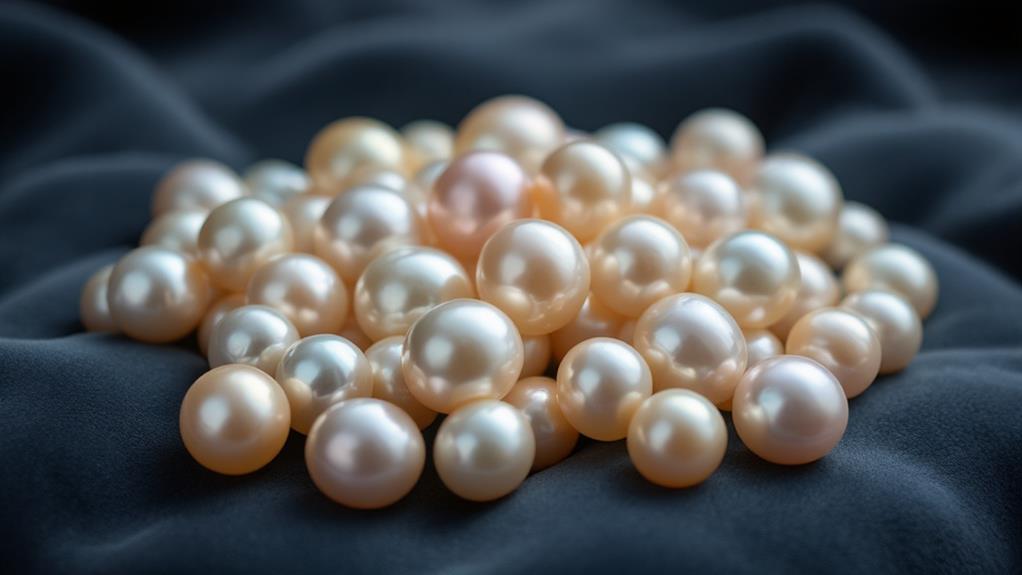
In the domain of famous pearls, their tales often shimmer as brightly as the gems themselves. Imagine the La Peregrina Pearl, with its perfect teardrop shape and impressive 58.5 carats. This gem boasts a history as rich as its beauty, having graced the necks of royals and celebrities, including Elizabeth Taylor. Its expedition through time is nothing short of legendary.
Then there's the massive Pearl of Lao Tzu, also called the Pearl of Allah, the largest natural pearl ever found. Weighing about 14 pounds, it emerged from the depths of the Palawan Sea in the Philippines, capturing imaginations worldwide with its sheer enormity.
The Marie Antoinette Pearl, a natural pendant, carried the elegance and tragedy of the French queen herself. When it was auctioned for over $36 million in 2018, its historical significance sparkled anew.
The Hutton-Mdivani Necklace, although renowned for its jadeite beads, intertwines the allure of pearls with luxury and history, fetching over $27.4 million at Sotheby's.
Lastly, the Black Pearl of Lao Tzu, shrouded in mysticism, was revered in ancient cultures. Its mysterious allure underscores the fascination with famous pearls throughout history.
Cursed Gems and Mysteries
Among the world's most enchanting jewels are those shrouded in tales of curses and mysteries. These gems captivate not just with their beauty but with their dark histories. The Hope Diamond, for example, weighs 45.52 carats and is infamous for supposedly bringing misfortune to its owners. Tragedy and loss seem to follow those who dare to possess it. Then there's the Black Orlov Diamond, a 67.5-carat gem linked to the mysterious deaths of two Russian princesses and a diamond dealer. Its dark allure only deepens with each tale of doom.
Consider these curiosities:
- Koh-I-Noor Diamond: Originally a staggering 793 carats, now 105 carats, it's said to bring bad luck to men, leading to its careful placement in the British Crown Jewels.
- Dresden Green Diamond: The largest natural green diamond at 41 carats, it's believed to bring misfortune to its possessors, intertwining beauty with dread.
- La Peregrina Pearl: Weighing 58.5 carats, this pearl's rumored curse reportedly affects the marriages of its owners, adding an air of mystique and intrigue.
These stories remind you that sometimes, beauty comes with a price.
Record-Breaking Jewelry Sales
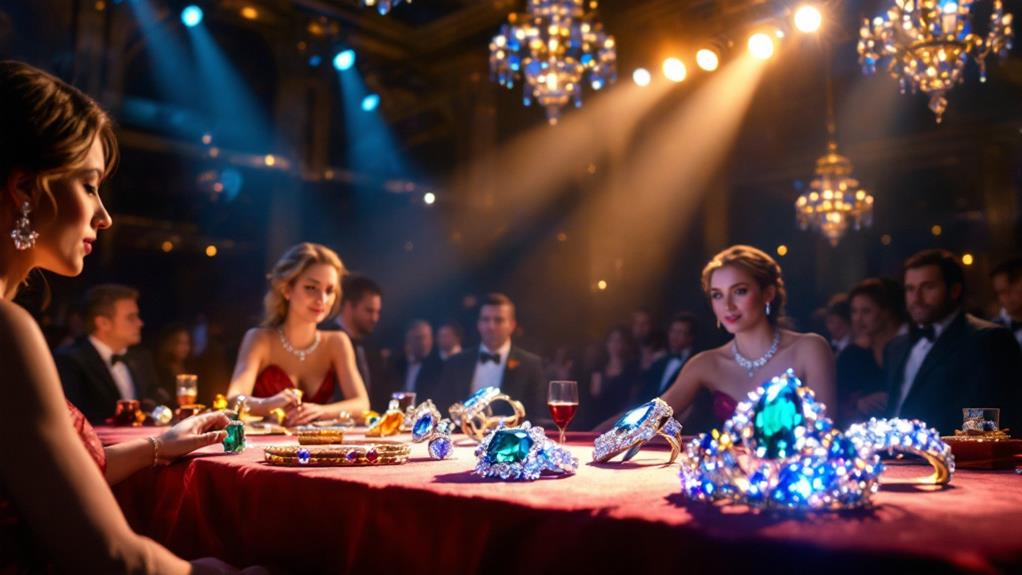
Jewelry sales often capture the world's attention, especially when record-breaking figures are involved. The Cora Sun-Drop Diamond, a stunning 110.3-carat yellow gem, dazzled at Sotheby's auction. It sold for a record-breaking $10.9-$12.4 million, making it the most expensive yellow diamond ever sold. Such sales highlight the remarkable allure of unique jewels.
Consider the Taylor-Burton Diamond, another legendary piece with a fascinating history. Originally purchased by Richard Burton for $1.1 million, it later fetched an impressive $5 million. This dramatic appreciation in value underscores the enduring fascination with celebrity-owned jewels. Elizabeth Taylor, a name synonymous with glamour, owned several illustrious pieces. Her famous diamond, the Elizabeth Taylor Diamond, also known as the Krupp Diamond, sold for $8.8 million in 2011. This sale showcased the timeless appeal of her collection.
Meanwhile, the Incomparable Diamond, weighing 407.48 carats, holds the Guinness World Record as the most expensive necklace, valued at approximately $55 million. Not to forget, La Peregrina Pearl, steeped in history, was sold for over $11 million at auction in 2011, reflecting the high value placed on unique pearls. These record-breaking sales continue to captivate and astonish.
Cultural Significance of Jewels
Throughout history, jewels have played significant roles beyond mere adornment. Their cultural significance spans love, power, and mysticism. Diamonds, in particular, are emblematic of eternal love and commitment, often gracing engagement rings to symbolize unbreakable bonds. This tradition has made diamonds a staple in romantic rituals, underscoring their importance in personal and cultural narratives.
Jewels have long been intertwined with royalty and power. Crowns, scepters, and ceremonial regalia are adorned with precious stones to signify wealth and status. Historically, possessing jewels was synonymous with nobility, their sparkle reflecting the grandeur of empires and the prestige of rulers. This link between jewels and royalty continues to captivate, as seen in modern-day royal collections.
Folklore adds another layer to the allure of jewels. Across different cultures, gemstones are believed to possess protective qualities and the power to ward off evil spirits. They're thought to bring prosperity and good fortune to their wearers. Here are some aspects of their cultural significance:
- Diamonds symbolize strength and clarity.
- Rubies, sapphires, and emeralds each hold unique meanings.
- Jewels often appear in art and literature, symbolizing luxury and desire.
These multifaceted roles guarantee jewels remain deeply embedded in human culture.

